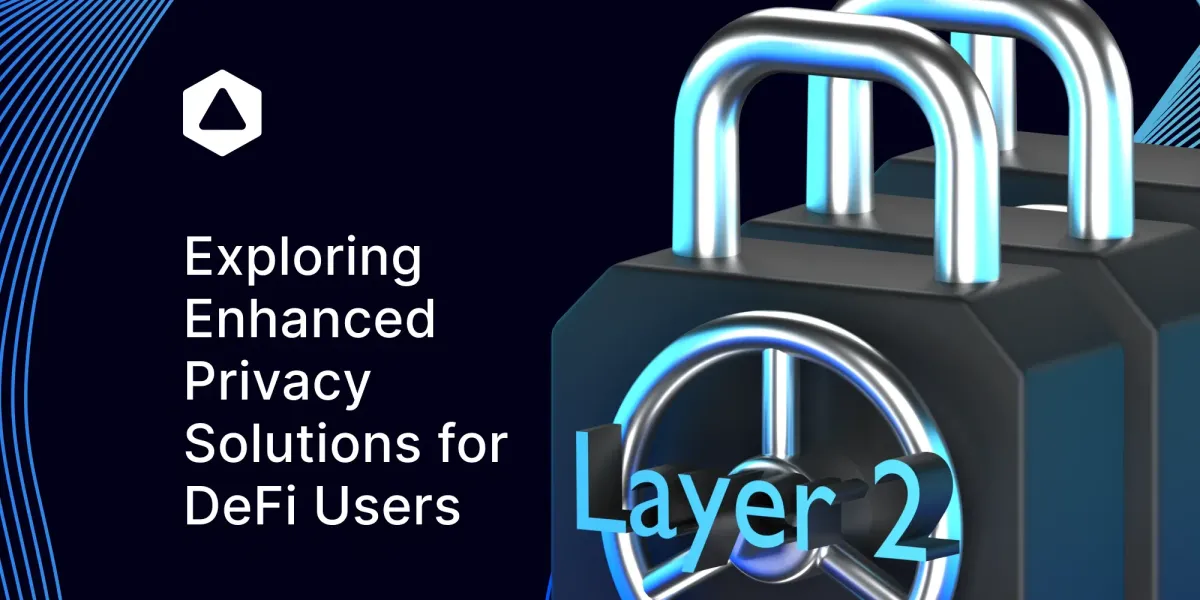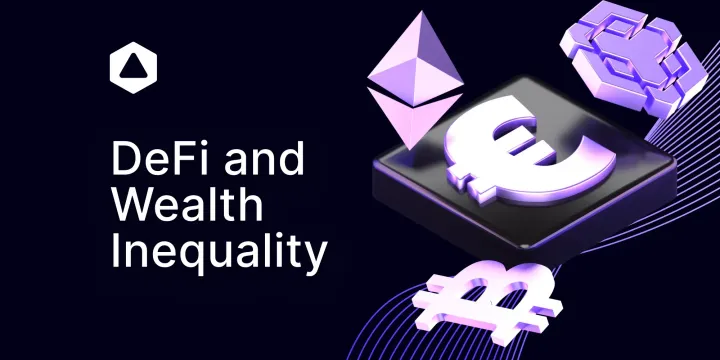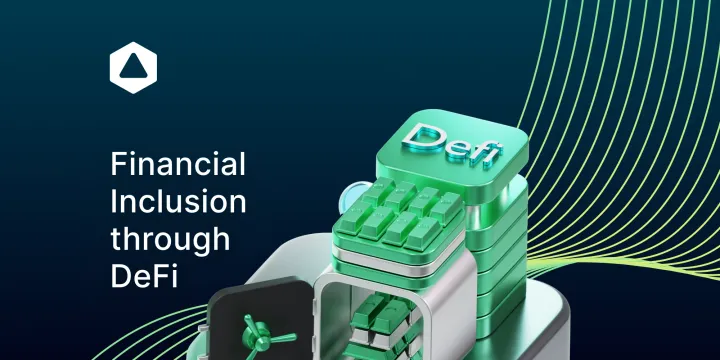Exploring Enhanced Privacy Solutions for DeFi Users: A Look at Off-Chain Layer-Two Solutions

Introduction
In the world of cryptocurrency and decentralized finance (DeFi), privacy and security are paramount. As the popularity of DeFi platforms continues to surge, the need for robust privacy solutions becomes increasingly evident. One promising avenue in this quest for privacy is the exploration of off-chain layer-two solutions. This semi-technical document aims to shed light on the concept of off-chain privacy solutions and their potential to enhance privacy for DeFi users.
Understanding DeFi and Privacy Concerns
Decentralized Finance, or DeFi, refers to a financial ecosystem built on blockchain technology that aims to provide traditional financial services without intermediaries. While DeFi offers numerous advantages such as accessibility and transparency, it also brings along privacy concerns. The pseudonymous nature of blockchain transactions might expose users’ financial activities to prying eyes, which raises the need for privacy-enhancing measures.
Off-Chain Solutions: An in-depth analysis
Off-chain solutions are mechanisms that enable certain operations to occur outside the primary blockchain, while still retaining the security and trust associated with the blockchain. These solutions are often employed to alleviate the scalability issues of blockchains, but they can also be leveraged to enhance privacy. In the context of DeFi, off-chain solutions could provide a way to conduct transactions and interact with smart contracts privately.
What are off-chain solutions?
Off-chain solutions are mechanisms that allow certain operations to take place outside of the main blockchain. This can be done to improve the scalability, privacy, or efficiency of the blockchain.
Why are off-chain solutions needed?
Blockchains are designed to be secure and decentralized, but these features can also make them slow and expensive to use. For example, every transaction on a blockchain must be verified by all of the nodes in the network, which can take time and resources. Additionally, the public nature of blockchains can make it difficult to maintain privacy.
Off-chain solutions can help to address these challenges by offloading some of the work from the L1 blockchain. This can make transactions faster and cheaper, and it can also improve privacy.
How do off-chain solutions work?
There are many different ways to implement off-chain solutions. Some common approaches include:
Sidechains
Sidechains are separate blockchains that are linked to the main blockchain. Transactions can be processed on the sidechain and then later transferred to the main blockchain. This can help to improve scalability and efficiency.
Layer 2 solutions
Layer 2 solutions are built on top of the main blockchain. They can provide features such as off-chain payments and smart contract execution.
State channels
State channels are a way to facilitate private transactions between two parties. The state of the transactions is kept off-chain, and only the final outcome is recorded on the blockchain.
Consensus mechanisms
Consensus mechanisms are used to reach agreement on the state of the blockchain. Off-chain solutions can use different consensus mechanisms than the main blockchain. For example, they may use a less demanding consensus mechanism to improve scalability.
Advantages of off-chain solutions
Off-chain solutions offer a number of advantages over traditional blockchains, including:
Scalability
Off-chain solutions can help to improve the scalability of blockchains by offloading some of the work from the main blockchain. This can make transactions faster and cheaper.
Privacy
Off-chain solutions can be used to improve the privacy of transactions by keeping them off the public blockchain.
Efficiency
Off-chain solutions can be more efficient than traditional blockchains by reducing the number of transactions that need to be processed on the main blockchain.
Disadvantages of off-chain solutions
Off-chain solutions also have some disadvantages, including:
Complexity
Off-chain solutions can be complex to implement and use.
Security
Off-chain solutions may be less secure than traditional blockchains because they rely on third parties.
Trust
Off-chain solutions require trust between the parties involved.
Off-chain solutions are a promising way to address the scalability, privacy, and efficiency challenges of blockchains. However, they also have some disadvantages that need to be considered. Overall, off-chain solutions can be a valuable tool for developers and users who want to build and use blockchain applications.
Here are some specific examples of off-chain solutions that are currently being used or developed:
1. The Lightning Network: The Lightning Network is a layer 2 solution for Bitcoin that allows for fast and cheap payments. Transactions are processed off-chain and then settled on the Bitcoin blockchain.
2. The Liquid Network: The Liquid Network is a sidechain for Bitcoin that is designed to improve scalability and privacy. Transactions can be processed on the Liquid Network and then settled on the Bitcoin blockchain.
3. State channels: State channels are being used by a number of DeFi projects to facilitate private transactions. The state of the transactions is kept off-chain, and only the final outcome is recorded on the blockchain.
Off-chain solutions are a rapidly evolving field, and there are many new developments happening all the time. As blockchain technology continues to mature, off-chain solutions are likely to play an increasingly important role in making blockchains more scalable, private, and efficient.
Layer-Two Solutions and their Role
Layer-two solutions operate on top of the main blockchain, creating a secondary layer that can handle various tasks without overburdening the main blockchain. These solutions are designed to improve scalability, reduce fees, and offer faster transaction processing. By utilizing layer-two solutions, DeFi platforms can potentially address privacy concerns by conducting sensitive operations off-chain, shielding them from public view.
Enhancing Privacy with Off-Chain Layer-Two Solutions
Off-chain layer-two solutions can play a pivotal role in enhancing privacy for DeFi users. Here’s how:
1. Confidential Transactions: Confidential transactions obscure the transaction amount, making it difficult for observers to determine the exact value being transferred. This can add an extra layer of privacy to transactions on DeFi platforms.
Explanation:
Confidential transactions use cryptographic techniques to hide the transaction amount in a way that it remains verifiable without revealing the exact value. This enhances privacy by making it difficult for outsiders to determine the specifics of the transaction.
Pseudocode:
function createConfidentialTransaction(sender, receiver, amount):
// Generate a random blinding factor
blindingFactor = generateRandomNumber()
// Compute the commitment
commitment = computeCommitment(amount, blindingFactor)
// Sender generates a range proof to prove the commitment is within valid bounds
rangeProof = generateRangeProof(commitment, amount)
// Construct the confidential transaction
confidentialTransaction = {
sender: sender,
receiver: receiver,
commitment: commitment,
rangeProof: rangeProof
}
return confidentialTransaction2. Zero-Knowledge Proofs: Zero-knowledge proofs allow one party to prove to another party that a statement is true without revealing the underlying information. This technology can be used to verify transactions without disclosing sensitive data, enhancing both privacy and security.
Explanation:
Zero-knowledge proofs enable one party to convince another party that a certain statement is true without disclosing the underlying details. This can be used to verify transactions without revealing sensitive information.
Pseudocode:
function generateZeroKnowledgeProof(statement, secret):
// Generate a proof using cryptographic protocols
proof = generateProof(statement, secret)
return proof
function verifyZeroKnowledgeProof(statement, proof):
// Verify the proof using cryptographic verification
isValid = verifyProof(statement, proof)
return isValid
Challenges and Considerations
While off-chain layer-two solutions offer promising avenues for enhanced privacy in DeFi, there are challenges to address:
1. Security: Ensuring the security of off-chain transactions and smart contracts is crucial to prevent vulnerabilities and breaches.
2. Interoperability: Different layer-two solutions must seamlessly interact with one another and the main blockchain to ensure a cohesive DeFi ecosystem.
3. User Experience: Implementing new privacy features should not compromise the user experience, as complex setups might deter adoption.
4. Regulatory Compliance: Balancing privacy with regulatory compliance remains a challenge, as regulatory bodies seek transparency in financial transactions.
Conclusion
Off-chain layer-two solutions hold the potential to significantly enhance privacy for DeFi users. By leveraging technologies like confidential transactions, zero-knowledge proofs, and transaction aggregators, DeFi platforms can offer users the benefits of blockchain while safeguarding their financial privacy. However, it’s crucial for developers and stakeholders to address security, interoperability, user experience, and regulatory concerns to ensure the successful integration of these solutions into the DeFi landscape. As the DeFi ecosystem continues to evolve, the quest for privacy solutions remains an essential journey in maintaining the trust and confidence of users.

Connect with Bitfinity Network
Bitfinity Wallet | Bitfinity Network | Twitter | Telegram | Discord | Github

*Disclaimer: While every effort is made on this website to provide accurate information, any opinions expressed or information disseminated do not necessarily reflect the views of Bitfinity itself.




Comments ()